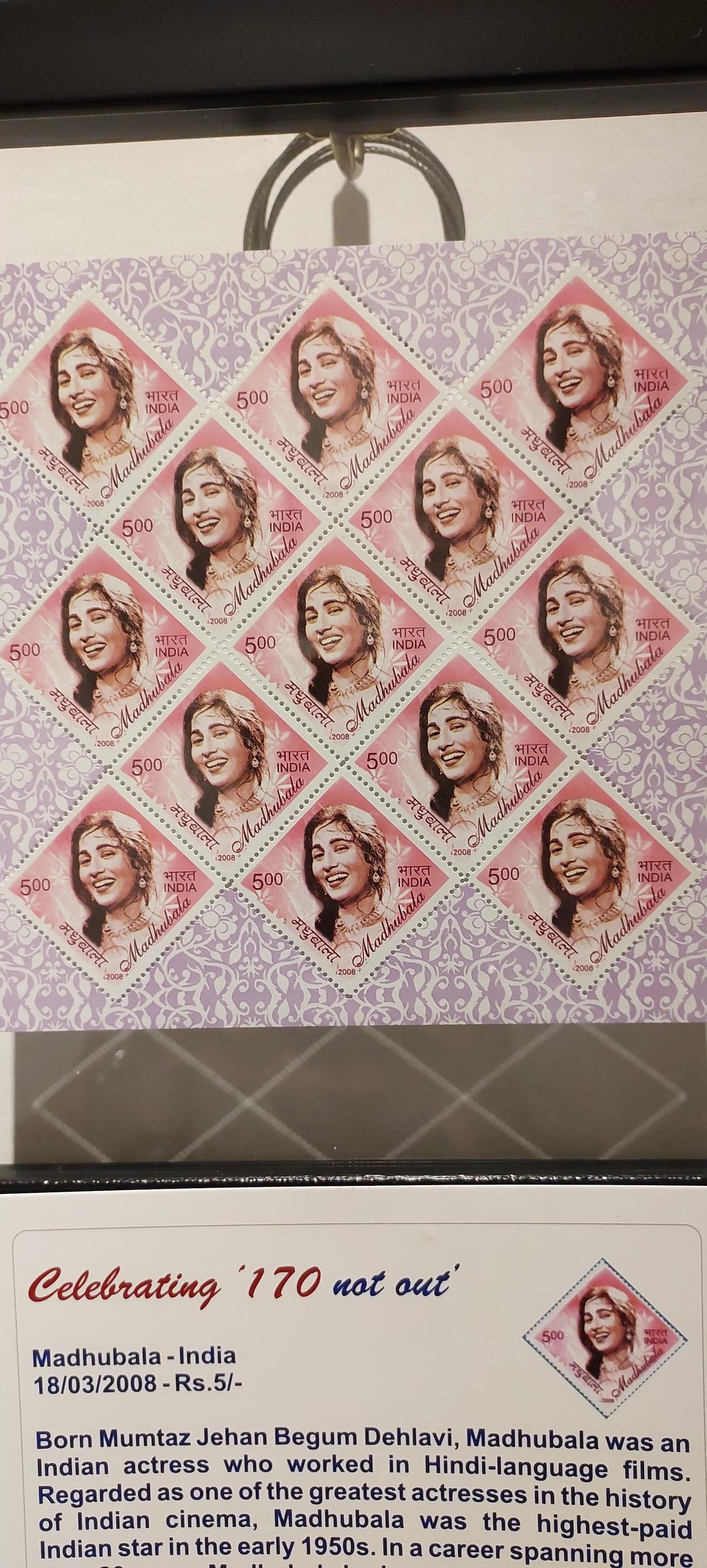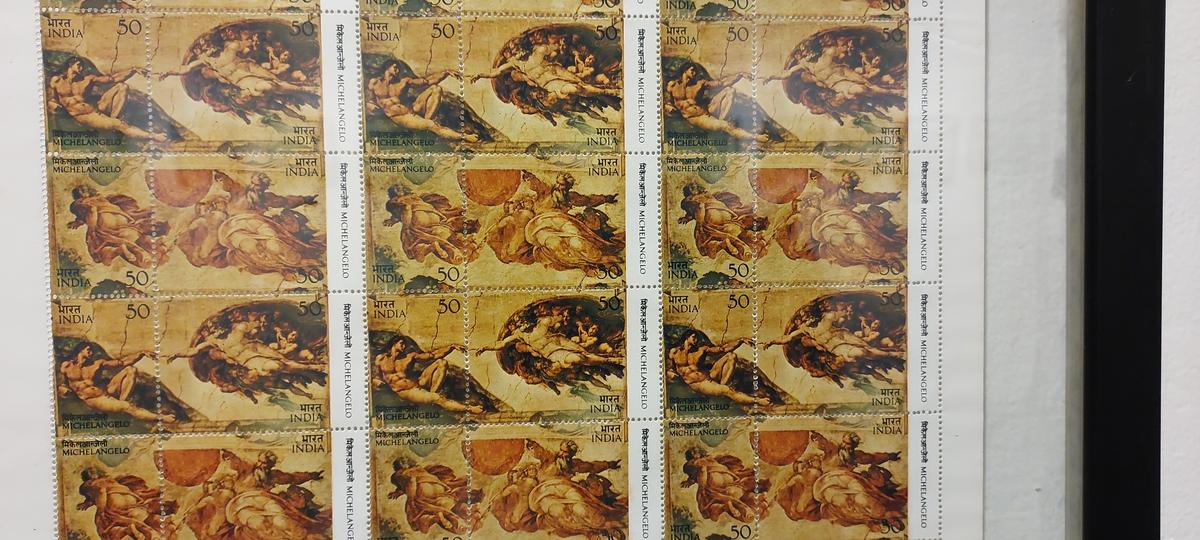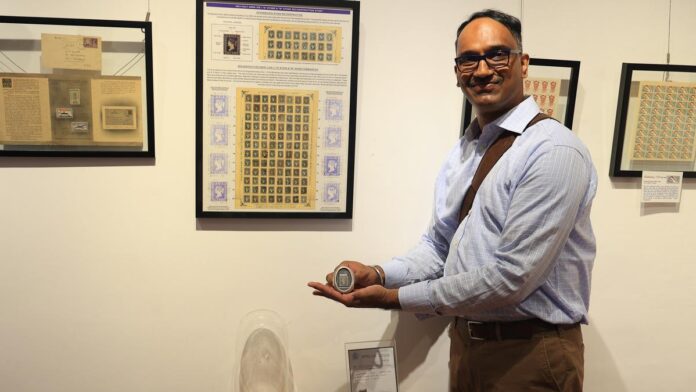Stamp collecting used to be a popular hobby once upon a time, when letters were eagerly awaited and penpals cherished. But, if you ever thought stamps were relics of yore, 170 Not Out currently underway at the Indian Institute of World Culture will prove you wrong.
Curated by Ramu M Srinivasa, this exhibition not only celebrates 170 years of postal stamps in India, which were introduced on October 1, 1854, but also the 155th birth anniversary of Mahatma Gandhi with an exclusive collection of stamps bearing his image.
“The exhibition is divided into two parts. Since this year marks the 155th birth centenary of Gandhi, one section is completely devoted to Indian stamps featuring him, as well as those by other nations lauding him,” says Ramu.
The other section celebrates India Posts, now in their 170th year, (hence the title of the exhibition) and covers an astounding range of flora and fauna, notable personalities, world events, Indian mythology and more. Every frame is accompanied by a few crisp lines about the stamps on display.
From 170 Not Out
| Photo Credit:
Special Arrangement
The majority of stamps on display, except for the section titled Discover the Senses contributed by Gururaj Shenoy, are from Ramu’s personal collection which he began 40 years ago. 170 Not Out showcases close to 5,000 stamps under the themes of Gandhiji and India Posts — the rest of the stamps he owns, are not on display.
Ramu began collecting stamps as a child and has been part of the Karnataka Philatelic Society since 1986. The Society itself is still going strong, meeting on the first Sunday of every month at the Bangalore / Bengaluru GPO; they celebrate their 50th anniversary next year. Despite the invasion of digital forms of communication, post offices still bustle with activity all year long, bringing out stamps to commemorate individual and collective milestones.

From 170 Not Out
| Photo Credit:
Special Arrangement
Among the many beauties at 170 Not Out is the coveted Penny Black — the first ever adhesive postal stamp — highly sought after by almost every philatelist worth his salt. There is an entire collection representing the life cycle of a bird and features 27 different avian species, as well as unusually shaped stamps, and bejwelled and ornate ones.
Both of India’s epics, The Ramayana and The Mahabharata, are immortalised in a series of stamps. According to Ramu, one can book an entire sheet of stamps or a block, if they have subscribed for the same with the philatelic society.
Ramu says the idea behind 170 Not Out was to bring students back to the hobby of stamp collecting. “Most people are into cricket and I thought a catchy name like that would stick. The first British stamp was introduced in India on October 1, 1854, and despite digitalisation and a drastic drop in the letter writing habit, India Posts is still doing well for itself.”
In keeping with his goal of getting children interested in philately, Ramu has organised a treasure hunt, quiz and other activites such as letter folding (like inlands and aerogrammes when envelopes aren’t around) at the venue. Postcards are also available at the gallery in case impressionable young minds are inspired to dash off a few lines, and Ramu drops them at the nearby Basavangudi post office.

From 170 Not Out
| Photo Credit:
Special Arrangement
The exhibit Discover the Senses teaches basic mathematics to fifth, sixth, seventh and eighth standard students, and comprises stamps of various geometric shapes.
Surprisingly, Ramu says all over the world penpals still flourish, not only exchanging letters and news from their parts of the world, but also swapping their stamps. “I still write to a pen friend in Europe who sends me stamps on birds and butterflies, which are my area of interest and in return, I send him special occasion Indian stamps,” says Ramu, who got hooked on stamps as a boy when he would write home while visiting his grandparents during school holidays.
Ramu firmly believes a pastime should expand one’s mental horizons apart from offering a pleasant respite from the daily grind, and stamp collecting certainly does that. From learning about historic events and geographic locations, to getting a glimpse of newsmakers and pop culture, philately aims to transform children into “autonomous learners” and promotes, ”Cognitive learning means which enables you to think” he says, adding the activities at the exhibition have been designed keeping this aspect in mind.
170 Not Out will be on display at the Indian Institute of World Culture, Basavangudi, till October 31. Entry free. Mondays closed.
From 170 Not Out
| Photo Credit:
Special Arrangement
Published – October 22, 2024 04:51 pm IST
#celebrates #India #Posts #Gandhiji #human #existence
